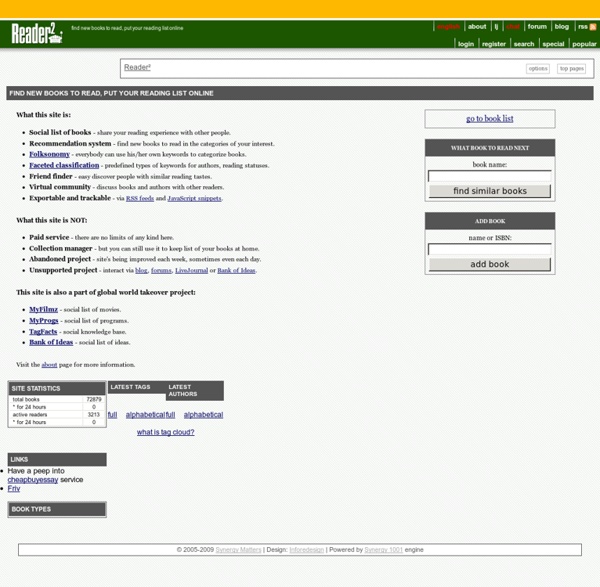



Share Book Recommendations With Your Friends, Join Book Clubs, Answer ... vox delicii Who’s In The News? Data visualizations of Google’s massive news aggregator are an interesting way to graphically keep tabs on developing news stories. A view of the project’s time-based interface. Stamen’s In The News visualizer provided a visual reference for Google’s “In The News” sidebar, providing an archive of popular news items, links to headlines, and a method for comparing news item performance over time. From 2004-2005, it provided a unique view on the 2004 presidential election, and tracked how stories about world events erupted and subsided. The interface could be refocused on specific names, and groups of items could be compared over time using sparkline-style graphs. On August 2, 2005, we stopped gathering data from Google News. Oh, so meta! We had hoped the data would remain more consistent and based on user input, and lead to some interesting analytical conclusions. View Project. March, 2004: Rice vs. June 9, 2004: the project hits metafilter
20 Useful Free PDF ebooks for Designers and Bloggers :Speckyboy Design Magazine Over the years I have a saved a decent sized library of useful design and blogging related PDF ebooks, I love them. I have voraciously collected them, and all stored on my mobile for whenever the chance of quick read arises. In this post I would like to share my favorite 20 (freely available) ebooks with you. All of the below books are have been written to be read quickly, they are neither very long nor are they the definitive resource on their specific subject. Having said that, they are all a ‘darn good read’, and well worth downloading. Some of the books may have been written a few years back, but the topics are certainly relevant now. Introduction to Good Usability by Peter Pixel This guide is especially handy if you haven’t done a lot of webdesign yet or if you are involved in webdesign but don’t do any of the real work. A lot of books have been written in the past but the threshold for reading them, especially if you have never built a site, is quite big, hence this short guide.
Userscripts.org - Universal Repository Libfly, la bibliothèque communautaire ... del.icio.us tag search {trainque.com} This form allows you to look up del.icio.us links that are tagged with one or more subjects. Example: entering art and design brings you to the url which has links to pages about both art and design. (Of course, you can also simply navigate to the url of your choosing to get the same results, but I prefer a painlessly simple user-friendly form.) Currently, this only allows a maximum of 7 tags. Keep in mind that the more tags you enter, the more filtered your topic becomes and so the smaller the result set. You can leave feedback, read blog post about this tool, see my other projects or go home.
BookRabbit a social network for books. Bringing your bookshelf to life - BookRabbit Listal - Social media cataloging, movies, books, music and games weRead.com - All about Books, Reviews, Recommendations and Authors What if you can leave your life and its problems behind and go places - to other countries, worlds, galaxies and back and forth in time? Books are that one medium that will grant you full access to anywhere and everywhere, allowing you to escape into your imagination with rich descriptions of everything you might not otherwise get to see in your lifetime. Reading books is a hobby that most of us do not devote time to specifically, but on a rainy day when nothing else seems interesting, a quick peek into your bookshelf will reveal hidden gems that will keep you enthralled for the next several hours. Books also improve your knowledge span, in small ways and big, and greatly broaden your vocabulary as well. Which is also why a bibliophile will always sound smarter without meaning to, than one who restricts the amount of literature that he absorbs from this world. Buy books online from Flipkart with your credit card or via net banking, both of which have secure payment processing.
del.icio.us Moteur de recherche des Livres - Ebook